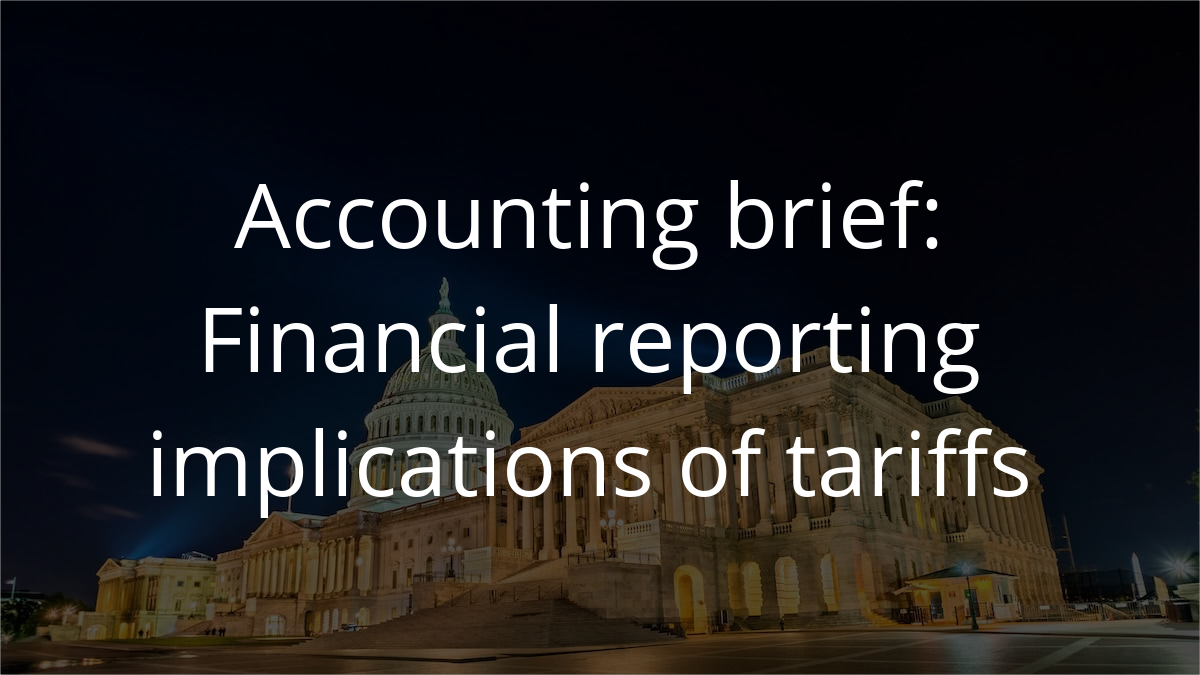ARTICLE | May 18, 2023
This article first appeared in the April 2023 edition of The Tax Adviser magazine.
Assessing the need for a valuation allowance
Over the past decade or so, financial reporting under GAAP has become more mechanical or formulaic, with the goal of increasing consistency among financial statement preparers. Yet, professional judgment remains a critical skill in preparing and auditing financial statements, even though the trend in financial reporting may appear to lessen the need for it.
A key part of accounting for income taxes under FASB Accounting Standards Codification (ASC) Topic 740, Income Taxes, that requires significant professional judgment is evaluating the need for a valuation allowance. The valuation allowance reduces a company’s deferred tax assets (DTAs) to the amount more likely than not to be realized. This analysis requires thoroughly evaluating all positive and negative evidence available and includes objective, subjective, and mechanical elements.
A general starting point in the valuation allowance assessment is to look at the company’s three-year cumulative pretax book losses or earnings. Companies that show a strong history of earnings demonstrate positive evidence that a valuation allowance is not needed. Likewise, the guidance in ASC Paragraph 740-10-30-23 states: “A cumulative loss in recent years is a significant piece of negative evidence that is difficult to overcome.” While a cumulative loss is not a bright-line test, a company with pretax losses has a significant piece of negative evidence. While the term “recent years” is not defined, most practitioners define this as the three-year period including the current-year results.
Evaluating cumulative earnings or losses is only one piece of evidence; companies must analyze all negative and positive evidence to determine whether a valuation allowance is needed. The guidance in ASC Paragraph 740-10-30-18 identifies four possible sources of taxable income that may be available under the tax law to support the realization of DTAs:
- Future reversal of existing taxable temporary differences;
- Future taxable income exclusive of reversing temporary differences and carryforwards;
- Taxable income in prior carryback year(s), if carryback is permitted under the tax law; and
- Tax planning strategies.
If one or more sources are sufficient to support realization of a company’s DTAs, the company does not need to consider the remaining sources. In considering the weight of available evidence, the guidance in ASC Paragraph 740-10-30-23 states: “The weight given to the potential effect of negative and positive evidence shall be commensurate with the extent to which it can be objectively verified.”
As discussed below, assessing the need for a valuation allowance requires careful professional judgment.
Impact of private company goodwill alternatives (FASB ASU 2014-02)
In 2014, FASB issued Accounting Standards Update (ASU) No. 2014-02, Intangibles — Goodwill and Other (Topic 350), outlining the private company alternative for goodwill that allows nonpublic companies to elect to amortize goodwill on a straight-line basis over 10 years, or less than 10 years if the company demonstrates that another useful life is more appropriate.
The private company alternative for goodwill significantly reduces the cost and complexity for financial statement preparers. While it also reduces net income due to the expense resulting from the amortization of goodwill, for nonpublic companies making this election, the reduction in net income may not be all that impactful from the perspective of the users of the financial statements. The private company alternative for goodwill also indirectly affects a company’s income tax provision.
Prior to the private company alternative for goodwill, deferred tax liabilities (DTLs) resulting from tax-deductible goodwill were considered indefinite. For companies with a valuation allowance, an indirect effect of adopting the private company alternative was a reduction in the amount of valuation allowance required as a result of goodwill being converted from an indefinite-lived asset to a definite-lived asset. For companies that amortize goodwill, DTLs created by the amortization of goodwill for tax purposes are now considered reversing DTLs and provide a source of income to support the realization of reversing DTAs.
Effect of the TCJA
Several years after FASB issued ASU No. 2014-02, the law known as the Tax Cuts and Jobs Act (TCJA), P.L. 115-97, was enacted. The TCJA modified the net operating loss (NOL) rules, providing that NOLs generated after Jan. 1, 2018, can now be carried forward indefinitely but can offset only 80% of taxable income in the year of utilization. Indefinite-lived DTLs serve as a source of income to support the realization of these NOLs. With certain NOLs now being indefinite, indefinite-lived DTLs have the effect of reducing the amount of valuation allowance required with regard to indefinite-lived DTAs, while the 80% limitation on utilization has resulted in companies needing to carefully schedule the reversal of existing DTLs and DTAs to determine how the limitations under the TCJA impact the amount of realization supported by DTLs. While the scheduling exercise and the evaluation of cumulative losses are mechanical, projecting future taxable income requires significant amounts of professional judgment.
An example
For private companies that have elected the private company alternative for goodwill, careful examination of expected future results is necessary to determine whether a valuation allowance is required. Consider the following example, which illustrates the need to exercise professional judgment:
Example: As of Dec. 31, 2022, a private company preparing calendar-year financial statements has a three-year cumulative pretax book loss of $30 million and is in an overall DTA position, with positive pretax book income before amortization. The company was acquired in a taxable acquisition at the beginning of 2020, resulting in a tax basis step-up, including tax-deductible and book goodwill of $600 million. Under the purchase accounting rules, the $600 million of goodwill is all component 1 goodwill. The company has elected the private company alternative and will amortize the book goodwill over 10 years ($60 million per year) and the tax goodwill over 15 years ($40 million per year). As a result of the election to amortize book goodwill, the company will have a $60 million amortization expense in the financials that is a significant component of the pretax book losses. However, due to the 15-year tax life of the goodwill, the company has taxable income over the same three-year period as shown in the table.
Results of election to amortize book goodwill
|
|
2020 |
2021 |
2022 |
|
Pretax book income before amortization |
$45,000 |
$50,000 |
$55,000 |
|
Amortization |
(60,000) |
(60,000) |
(60,000) |
|
Pretax book loss |
(15,000) |
(10,000) |
(5,000) |
|
Book-tax adjustment for amortization |
20,000 |
20,000 |
20,000 |
|
Taxable income |
$5,000 |
$10,000 |
$15,000 |
As of Dec. 31, 2022, the company has a cumulative deductible temporary difference of $60 million that would reverse in years 11–15 after the book goodwill is fully amortized. Assuming the company can accurately forecast and its future results are expected to be consistent with historical financial results, the analysis of future taxable income suggests that the company will be able to realize the DTAs resulting from the goodwill amortization difference. If the company stopped with the three-year cumulative book loss to determine whether a valuation allowance was necessary, the analysis would be incomplete.
In contrast, a company with the same fact pattern — except that it was unable to or did not elect the private company alternative for goodwill — would be in a cumulative income position and have a DTL as a result of the tax amortization of the goodwill. Both companies would have the same amount of taxable income in this scenario.
Over the past few years, FASB has explored the idea of amortizing goodwill for public companies because of the cost and complexity of performing goodwill impairment testing. After various roundtable discussions with stakeholders and research efforts, FASB deprioritized and ultimately removed the project from the technical agenda. Companies that began amortizing goodwill after the TCJA’s enactment, when NOLs have indefinite lives, would likely not have experienced a significant one-time benefit from the release of valuation allowance from the conversion of the indefinite-lived DTLs to definite-lived DTLs. However, as goodwill is amortized, there would still be an impact on cumulative book earnings.
While public companies may not be amortizing book goodwill anytime soon, private companies preparing financial statements should carefully consider the impact of their accounting policies under the private company alternative on their valuation allowance assessments. While it is tempting to rely on mechanical triggers, such as using evidence of cumulative book losses as a bright-line test, the guidance in ASC Topic 740 is clear that companies must use professional judgment in evaluating all of the positive and negative evidence available to conclude whether it is more likely than not that the company will realize its DTAs. While objective evidence should certainly be given more weight in assessing the need for a valuation allowance, ultimately, there is no alternative to professional judgment. This is particularly critical in situations as outlined above, where an accounting election could have a significant impact on the analysis and outcome.
Let’s Talk
Fill out the form below and we’ll get back to you to discuss your specific situation.
This article was written by Al Cappelloni, Darian A. Harnish and originally appeared on 2023-05-18. Reprinted with permission from RSM US LLP.
© 2024 RSM US LLP. All rights reserved. https://rsmus.com/insights/services/business-tax/assessing-the-need-for-a-valuation-allowance.html
RSM US LLP is a limited liability partnership and the U.S. member firm of RSM International, a global network of independent assurance, tax and consulting firms. The member firms of RSM International collaborate to provide services to global clients, but are separate and distinct legal entities that cannot obligate each other. Each member firm is responsible only for its own acts and omissions, and not those of any other party. Visit rsmus.com/about for more information regarding RSM US LLP and RSM International.
The information contained herein is general in nature and based on authorities that are subject to change. RSM US LLP guarantees neither the accuracy nor completeness of any information and is not responsible for any errors or omissions, or for results obtained by others as a result of reliance upon such information. RSM US LLP assumes no obligation to inform the reader of any changes in tax laws or other factors that could affect information contained herein. This publication does not, and is not intended to, provide legal, tax or accounting advice, and readers should consult their tax advisors concerning the application of tax laws to their particular situations. This analysis is not tax advice and is not intended or written to be used, and cannot be used, for purposes of avoiding tax penalties that may be imposed on any taxpayer.




